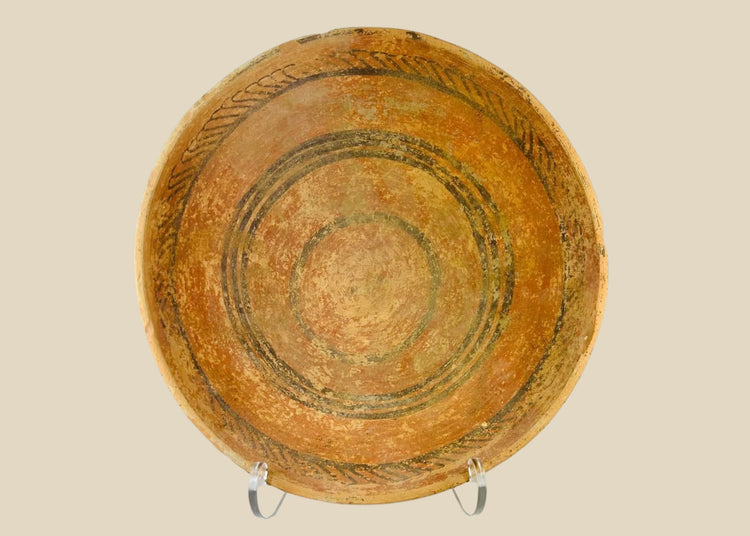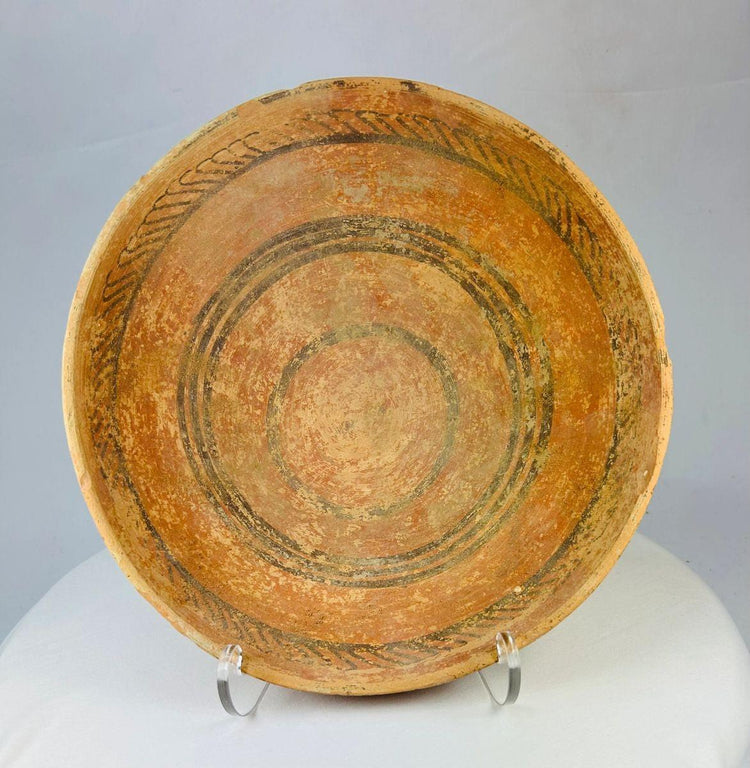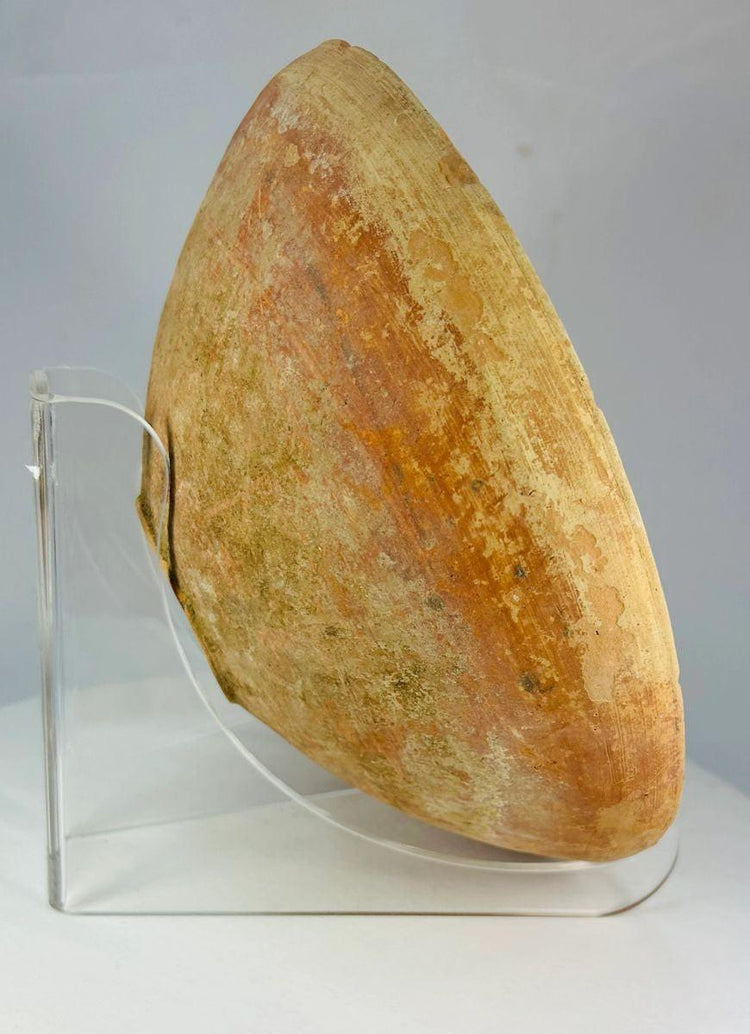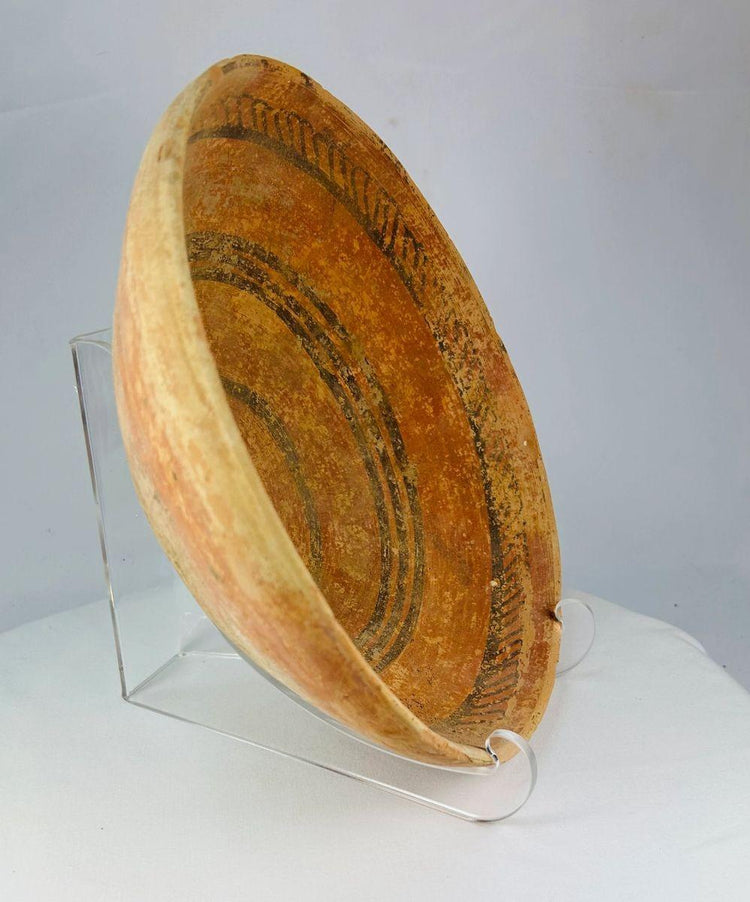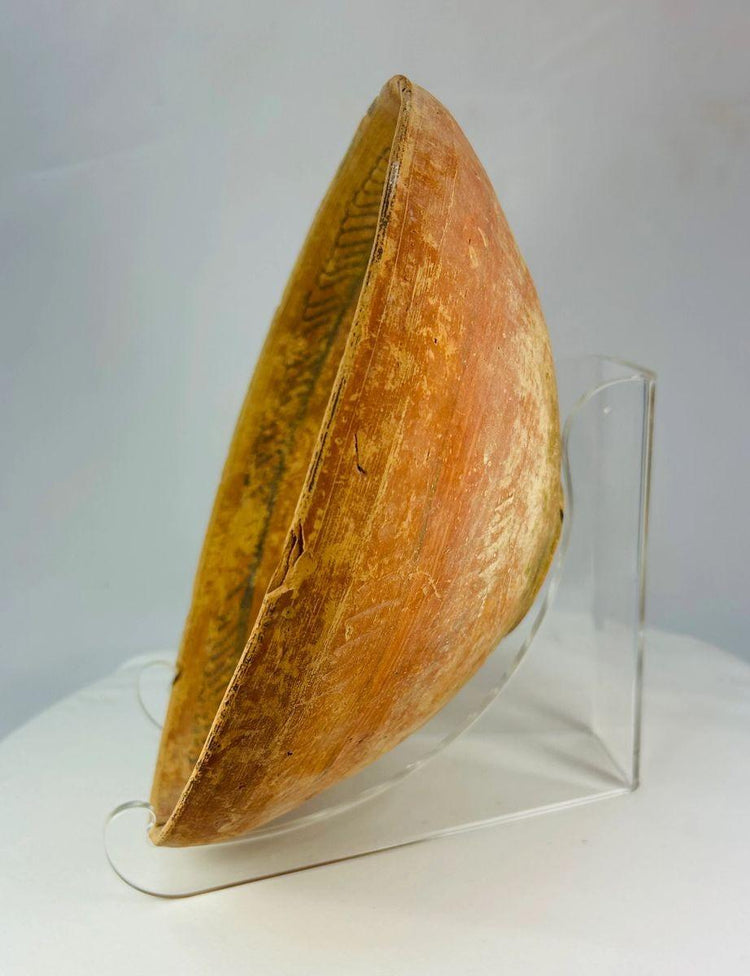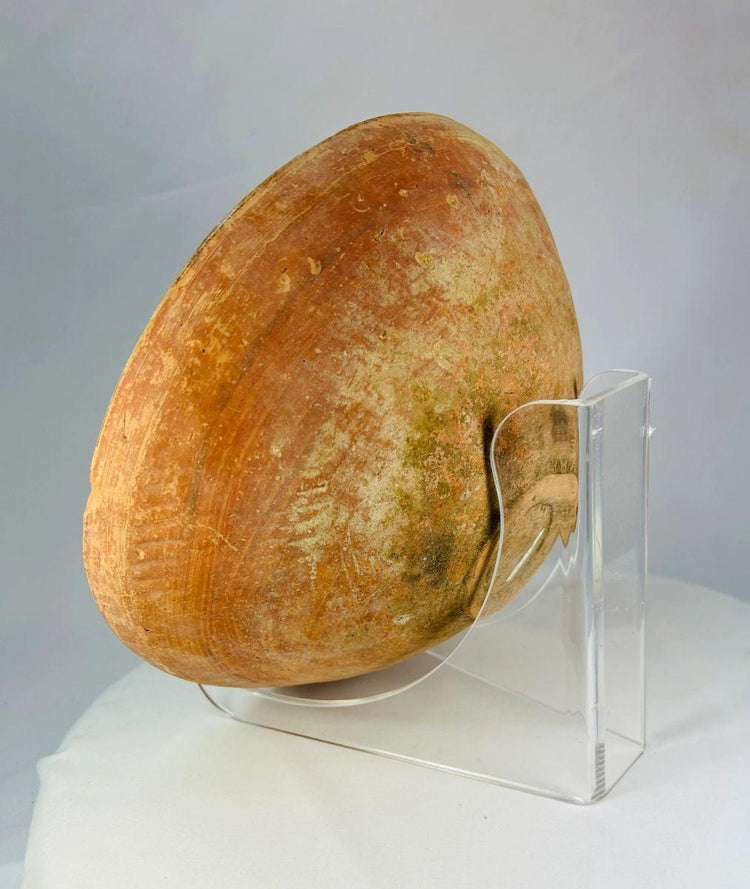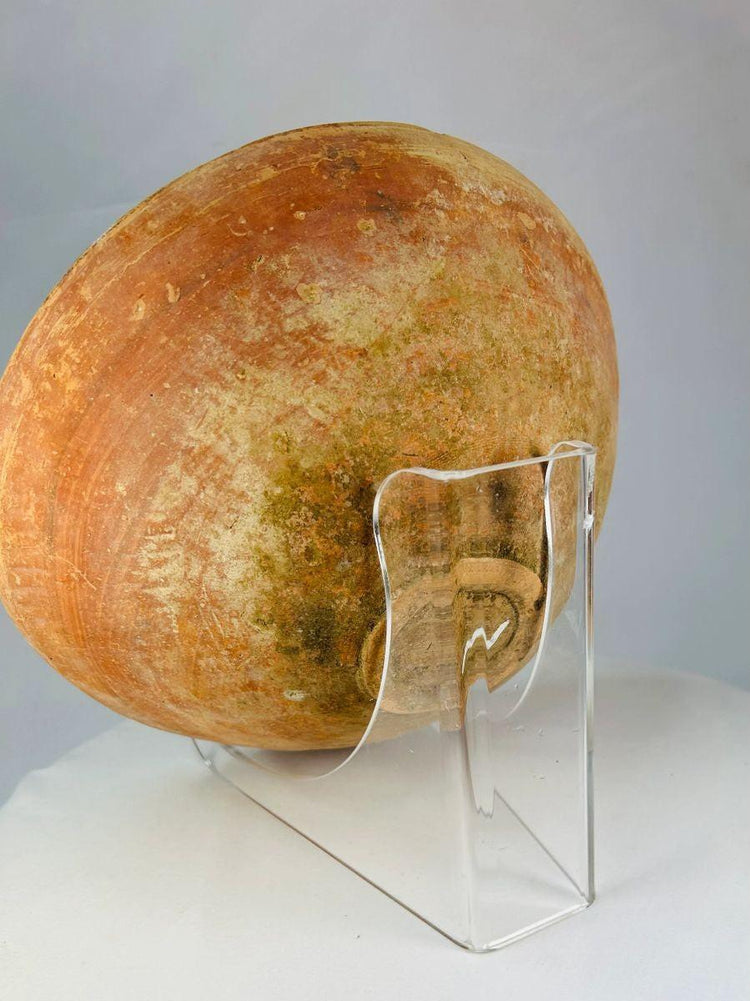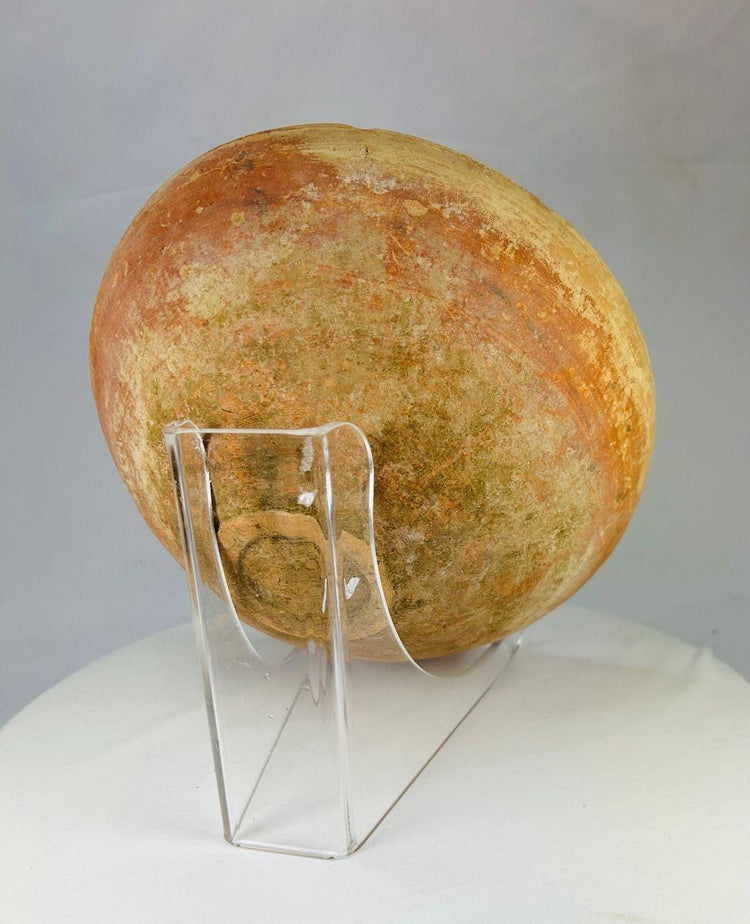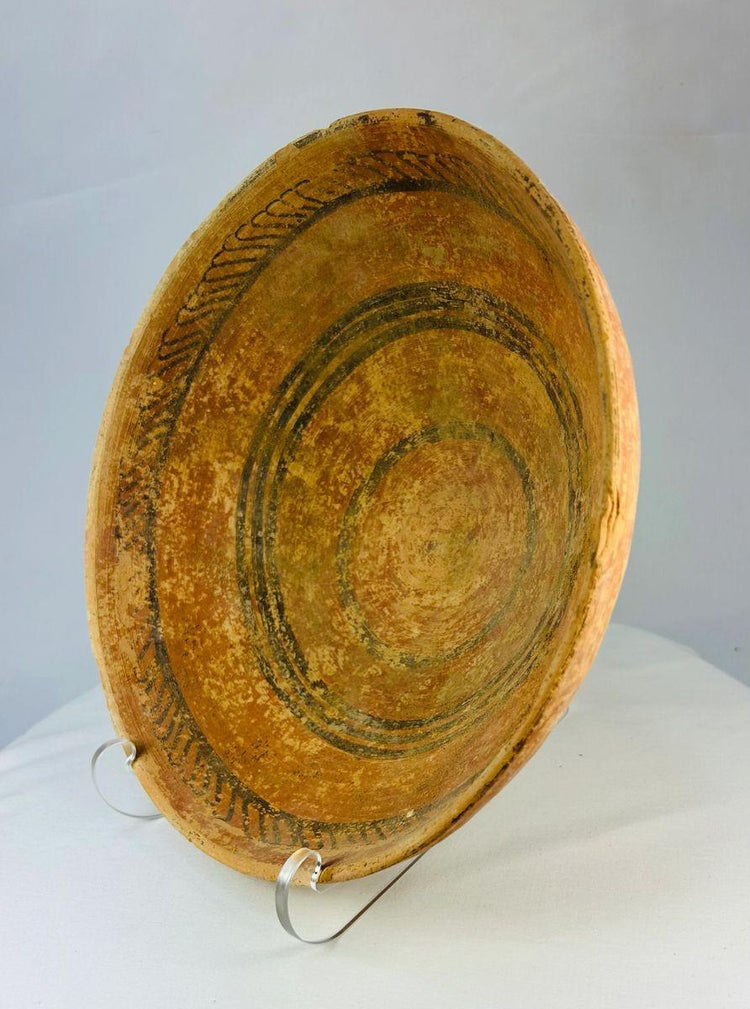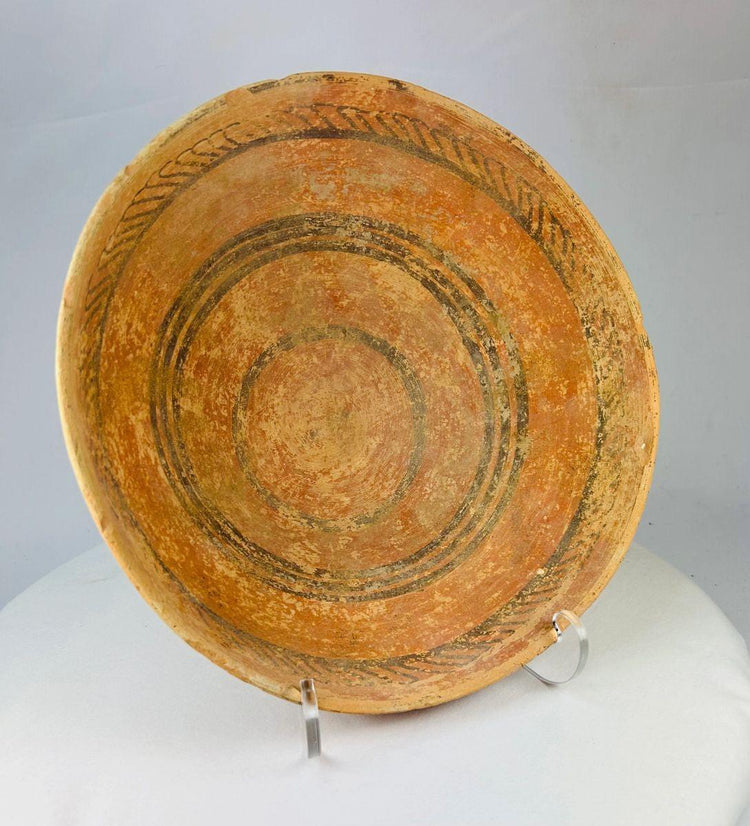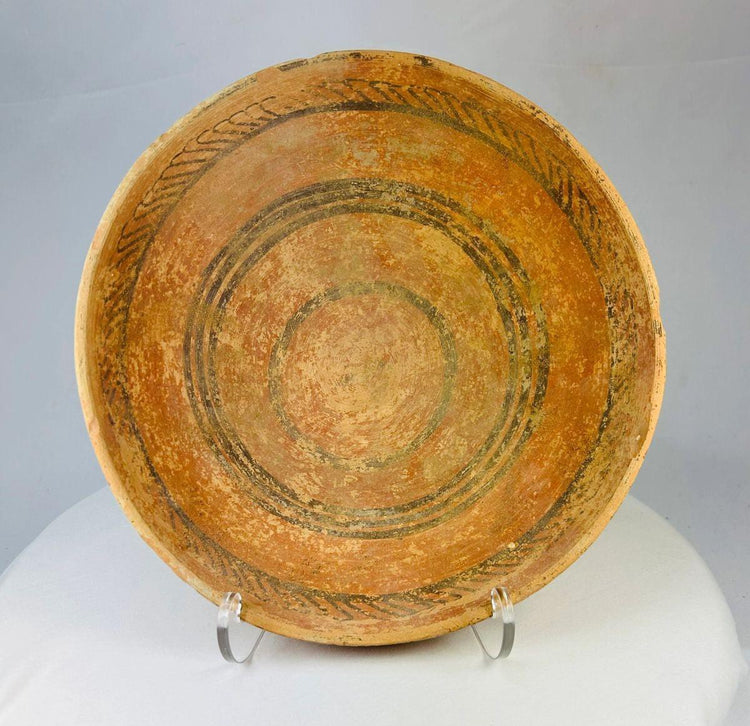Indus Valley | Painted Pottery Dish | Circa 2nd Millennium BCE
Description
More
Less
Historical Context & Origin
Region: Northern India / Indus Valley Civilization (modern-day Pakistan and Northwest India)
Material: Terracotta clay with painted decoration
Period: 2nd Millennium BCE (Harappan Culture)
Description
This ancient ceramic dish originates from the Harappan culture of the Indus Valley Civilization, one of the earliest and most advanced urban societies in human history. Dating to the 2nd millennium BCE, the dish embodies both practical function and symbolic artistry. Its shallow form suggests it was suitable for food offerings, ritual use, or domestic purposes, while the intricate concentric circles and geometric motifs painted in natural pigments reflect the Harappans’ mastery of symmetry and symbolism. These designs, characteristic of Indus Valley ceramics, highlight the integration of art, spirituality, and daily life within this highly developed civilization.
Features
- Shallow terracotta form with balanced proportions
- Painted concentric circles and geometric motifs in natural pigments
- Symmetrical and minimalist decoration with spiritual symbolism
- Crafted using advanced pottery techniques of the Harappan culture
- Excellent example of early South Asian ceramic artistry
Cultural Significance
Harappan ceramics are among the most important artistic legacies of the Indus Valley Civilization. This dish likely held ceremonial or ritualistic importance, perhaps used in offerings or religious contexts, while also serving functional roles in daily life. The geometric motifs represent the civilization’s emphasis on harmony, balance, and symbolic meaning in material culture. Such pieces provide valuable insight into the social, artistic, and spiritual dimensions of one of the world’s earliest urban societies.
Condition
The dish remains remarkably well-preserved despite its age. It shows natural surface wear and subtle abrasions consistent with centuries of burial and use. The patina enhances its authenticity, while the painted motifs remain discernible, adding to both its aesthetic and historical value. Structurally stable, it is an excellent example of ancient Harappan ceramic craftsmanship.
Dimensions (approximate)
Diameter: 10 in
Age
Over 3,500 years old
Learn More
Unlock the Secrets of the Indus Valley Civilization
Discover More Remarkable Indus Valley Artifacts in our Collection
Description
Historical Context & Origin
Region: Northern India / Indus Valley Civilization (modern-day Pakistan and Northwest India)
Material: Terracotta clay with painted decoration
Period: 2nd Millennium BCE (Harappan Culture)
Description
This ancient ceramic dish originates from the Harappan culture of the Indus Valley Civilization, one of the earliest and most advanced urban societies in human history. Dating to the 2nd millennium BCE, the dish embodies both practical function and symbolic artistry. Its shallow form suggests it was suitable for food offerings, ritual use, or domestic purposes, while the intricate concentric circles and geometric motifs painted in natural pigments reflect the Harappans’ mastery of symmetry and symbolism. These designs, characteristic of Indus Valley ceramics, highlight the integration of art, spirituality, and daily life within this highly developed civilization.
Features
- Shallow terracotta form with balanced proportions
- Painted concentric circles and geometric motifs in natural pigments
- Symmetrical and minimalist decoration with spiritual symbolism
- Crafted using advanced pottery techniques of the Harappan culture
- Excellent example of early South Asian ceramic artistry
Cultural Significance
Harappan ceramics are among the most important artistic legacies of the Indus Valley Civilization. This dish likely held ceremonial or ritualistic importance, perhaps used in offerings or religious contexts, while also serving functional roles in daily life. The geometric motifs represent the civilization’s emphasis on harmony, balance, and symbolic meaning in material culture. Such pieces provide valuable insight into the social, artistic, and spiritual dimensions of one of the world’s earliest urban societies.
Condition
The dish remains remarkably well-preserved despite its age. It shows natural surface wear and subtle abrasions consistent with centuries of burial and use. The patina enhances its authenticity, while the painted motifs remain discernible, adding to both its aesthetic and historical value. Structurally stable, it is an excellent example of ancient Harappan ceramic craftsmanship.
Dimensions (approximate)
Diameter: 10 in
Age
Over 3,500 years old
Learn More
Unlock the Secrets of the Indus Valley Civilization
Discover More Remarkable Indus Valley Artifacts in our Collection
You May Also Like




























